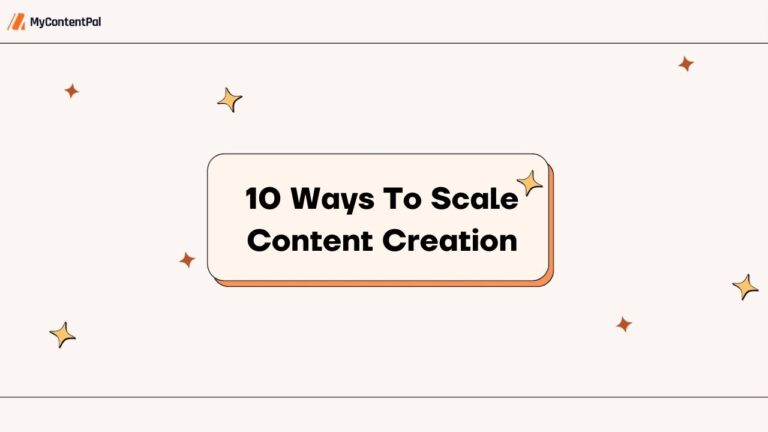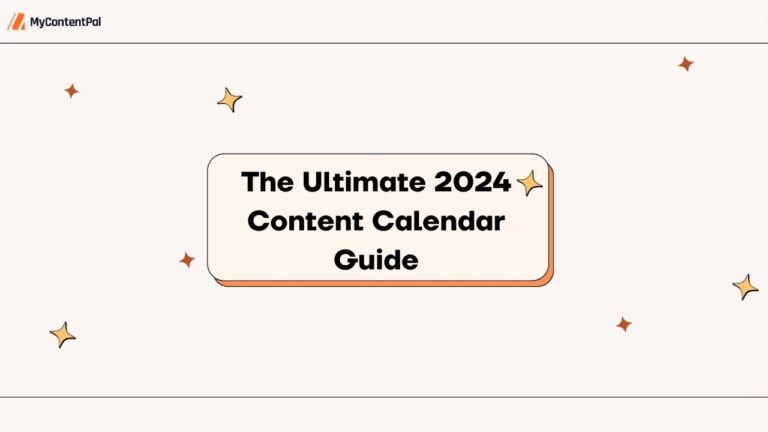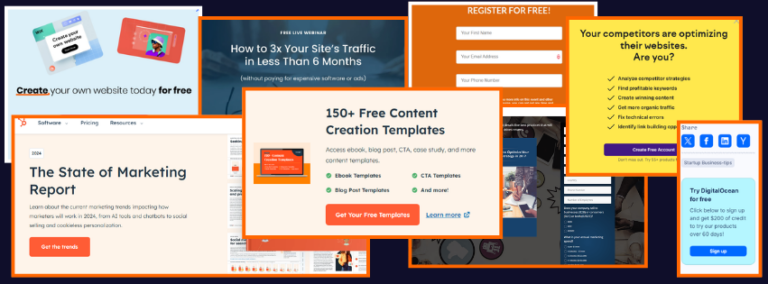Evergreen content refers to content that stays continually relevant long past its publication date. No matter what industry you’re in, evergreen content is exactly what you need to drive traffic and engagement. But, as you may have guessed, you’ll first need a plan before you rush into it.
A good evergreen strategy ensures your content stays useful and valuable over time, even as AI and Search Generative Experience (SGE) continue to evolve and have their say in the world of content.
So, allow me to guide you on how to go about creating evergreen content – what to do, what not to do, and some great examples of evergreen content.
How to Create Evergreen Content
Creating content that’ll stand the test of time and search engine algorithm changes is relatively straightforward. But, where many fall short is missing the finer details in between. Here’s how I would go about creating evergreen content:
1. Topic selection
Focus on subjects that will always be relevant and provide long-term value to your target audience. For example, a ‘Beginner’s Guide to Real Estate Investing’ is always useful to new investors. Avoid topics tied to current trends or events, since they can become outdated pretty quickly.
Useful tools:
2. Keyword research
Identify both high-volume and long-tail keywords related to your topic. An example of a solid evergreen keyword would be ‘how to start a franchise.’ But, keep in mind that keyword research can be very tricky. This is why leveraging a keyword research service is a go-to strategy for many. It saves you lots of time and valuable resources.
Useful tools:
3. Create comprehensive, in-depth content
Evergreen content has to cover a topic thoroughly. So, aim to provide all the necessary information in one place. For example, an ultimate guide on ‘Creating a Mobile App’ should include definitions, examples, and step-by-step instructions. This approach helps your audience and establishes your content as an authoritative resource.
Useful tools:
4. Optimise for search and shareability
Use relevant keywords organically throughout your text, titles, and in the meta descriptions. Also, include social media sharing buttons to make it easy for readers to share your content. This means making sure those buttons are clear and not visually offensive.
Another thing to do is consider the platform and format. While the core principles of optimisation typically remain the same, you’ll likely have to adapt your efforts depending on the platform, format, and industry you’re in. For example, a tutorial on ‘how to care for a rose bush’ should be optimised for SERPs and easy to share on relevant platforms like Pinterest.
Useful tools:
5. Regularly review and update
Schedule periodic reviews to refresh your content with new information, updated statistics, or current trends.
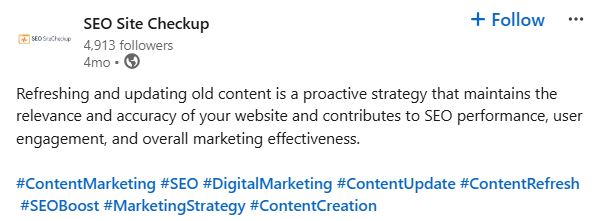
If I had a blog post on the ‘Best SEO practices,’ I’d update it with the latest search engine algorithm changes. Keeping your content fresh will better ensure it ranks high on SERPs.
Also, don’t forget to consider your site structure, user experience, and general information architecture. Search engines prioritise sites that users can easily navigate and stay on for long.
Useful tools:
Common Mistakes to Avoid
Now that you know how to go about creating evergreen content, here are some common pitfalls that you’ll need to avoid:
Choosing unrelated topics
Selecting topics that don’t align with the interests of your target audience can lead to disengagement. For example, a real estate blog discussing unrelated tech gadgets won’t attract or retain readers. Focus on relevant evergreen posts to ensure your content remains useful and appealing over time.
Focusing only on high-volume keywords
Although high-volume keywords can drive traffic, they might not always serve your audience’s needs.
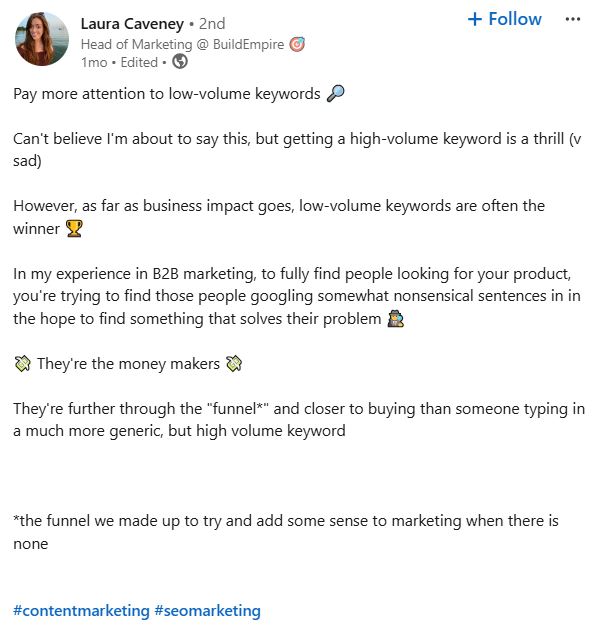
Balance them with more specific keywords to attract the right visitors (the ones who’ll convert). This can be tricky, though, which is why outsourcing keyword research is a smart move.
Failing to update the content
Regularly review and update your evergreen posts to maintain their value and accuracy, especially if you’re in an industry that changes rapidly, like tech. Failing to refresh it with new information can make it less relevant and thus rank lower.
Publishing and forgetting about it
You can’t just publish evergreen content and forget it – people still need to be able to find it. Promote your content continuously through social media and other channels to keep it visible. Regular promotion also helps it reach new readers and stay relevant in search results.
Keyword stuffing
Don’t get so caught up on keywords and ‘SEO scores.’ If you don’t know what an SEO score is, it’s just a score, typically out of 100, for written content on platforms like Surfer SEO. It gives you a rough idea of how well content might perform after certain keyword and structural placements.
Overloading your content with keywords can harm readability and search rankings. Look at it this way: stuffing ‘target audience’ multiple times in a paragraph can be off-putting. Focus on natural keyword integration to create a piece that’s more engaging and readable. Remember, user experience is also a big factor in ranking high.
Treating it as the only type of content
You’re just going to limit your content marketing strategy if you rely solely on evergreen content. Combine evergreen articles with timely posts to address current trends and events. This blend keeps your content dynamic, catering to both the ongoing and immediate interests of your audience.
Tips for Writing Evergreen Content

Writing is easy, but writing well isn’t. Use these quick tips to make your writing easier and to keep your evergreen content ahead of the competition’s:
Types of Evergreen Content
The great thing about evergreen content is that it comes in a wide variety of forms. Although the amount of options you’re about to see may excite you, it’s still important to choose content formats that suit your niche. So, think about who your audience is and how they search for information.
Ultimate guides
These comprehensive articles cover a topic extensively from start to finish. They serve as a one-stop resource, offering detailed information, practical tips, and actionable advice.
Case studies
Case studies analyse real-life examples of how specific strategies or products have been successfully implemented. They provide valuable insights, highlight challenges, and show the results achieved, making them highly informative and engaging.
Glossaries/dictionaries
These are collections of terms and definitions related to a particular field or industry. They help readers understand specialised jargon and improve their knowledge of key concepts.
Infographics
Infographics visually represent data and information, making complex ideas easier to understand. They’re engaging and very shareable, conveying important messages quickly and effectively.
Frequently Asked Questions (FAQs)
FAQs are a great form of evergreen content, especially when pulled from the ‘People also ask’ section on the SERP. They address common questions and pain points that readers may have about a topic. When clear, concise answers are provided, the need for further inquiries is reduced, which could hasten conversions.
Tutorials/how-to guides
Tutorials and how-to guides offer step-by-step instructions on completing specific tasks or learning new skills. They’re practical and user-friendly, helping readers achieve their goals with ease. They’re also a great form of content for integrating CTAs.
Resource lists
These compile valuable tools, websites, books, and other resources related to a specific topic. They save readers time by providing a curated selection of useful materials.
Product reviews and comparisons
Product reviews and comparisons evaluate different products and services, highlighting their features, pros, and cons. This is commonly used in industries where readers are about to make a big financial commitment and thus need to inform their decision.
Lessons learned/common mistakes
This sort of content shares experiences and advice on avoiding pitfalls. It provides practical insights and tips for achieving success.
Tutorial videos
With tutorial videos, you’re offering visual and auditory instructions on performing tasks and understanding concepts. They cater to visual learners and make complex information more accessible.
Interviews with experts
Who better to learn from than industry leaders and professionals? They offer unique perspectives, advice, and experiences, deepening a reader’s understanding of a topic.
Encyclopedic content
Encyclopedic content presents detailed, well-researched information on lots of topics. It serves as a reliable reference, offering extensive coverage and authoritative insights.
Examples of Evergreen Content
Here are some examples of businesses that have successfully utilised this tactic and what makes these examples effective:
allrecipes – How to Reheat Pizza and Keep the Crust Crispy

I love this ‘how to reheat pizza’ example because it’s something everyone can relate to. This evergreen piece addresses a common question with a simple, actionable guide.
I should also mention how much I love the subtitle: “You’ll never have to eat a limp, soggy slice again. It makes a plain mention of the reader’s pain point while making them visualise their problem being resolved.
Digital educators and coaches could implement similar how-to guides for frequently asked topics within their field. Just remember to keep it relatable and digestible.
Google – Search Engine Optimization Starter Guide
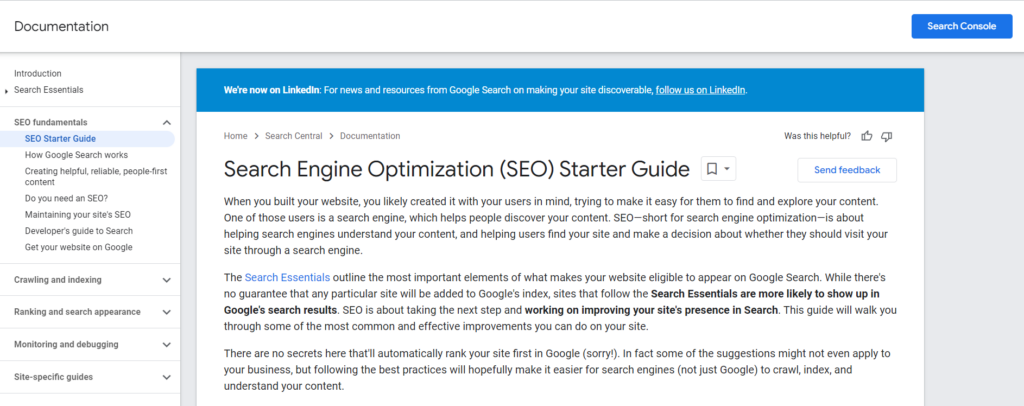
Google’s SEO Start Guide is a prime example of evergreen content. It gives comprehensive, foundational information that’s still relevant despite SEO practices changing almost every day.
If you’re a SaaS provider, pay attention because you could create similar in-depth guides on essential topics in your industry.
One thing I particularly like about this example is that the information is well grouped to make the document more scannable – a key factor in ranking high.
Fenty – Beauty Shade Finder

Now, for something a little different: Fenty’s Beauty Shade Finder. This is a good example because it shows that your evergreen content doesn’t have to be rigid. This is an interactive tool that will remain relevant as long as the products are available. Another thing I should mention is that it’s mobile-only and uses AI.
If you’re not optimising for mobile or creating content for mobile users, you’re not doing yourself any favours. Most searches these days happen on phones, so always keep that in mind, especially when crafting adjoined social media content.
Also, this example shows how creative you can get with AI, regardless of your industry. So, if you were in real estate, for example, you should offer a mortgage calculator or ROI estimator that uses AI to tailor the experience to the user.
Grammarly – How to Write Any Type of Letter
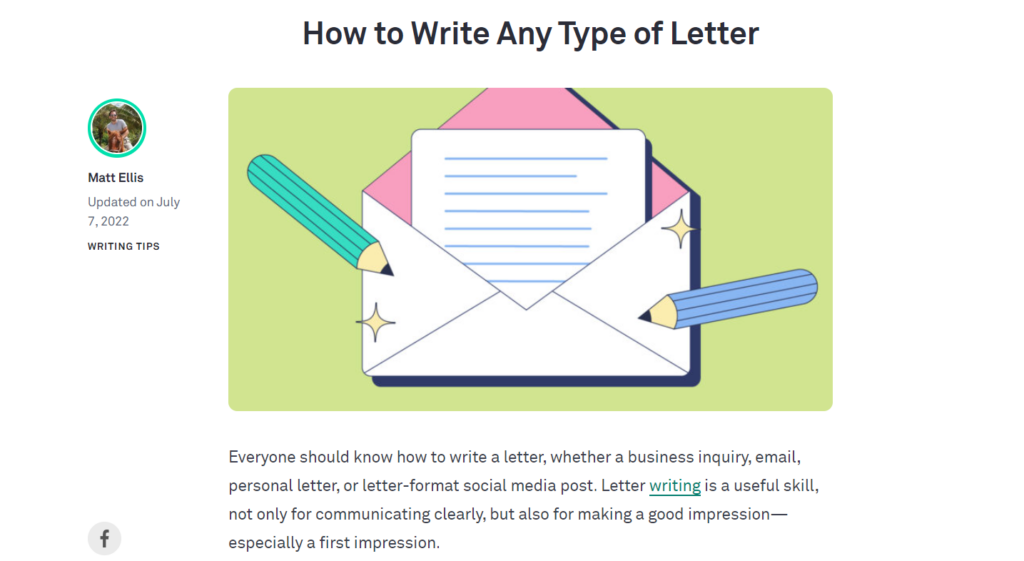
Grammarly’s guide on letter writing is another classic example of evergreen content. Why? The topic will never die out. Just think of how many people will be searching for this for generations. The advice offered is timeless and well broken down. My only criticism is that it does have some pretty lengthy text sections. So, if you’re looking to create something similar, remember that this can be quite an eyesore.
In this case, with the advent of AI, letter-writing methods may change slightly, showing the potential need for future updates to the content. I’d go about this by adding a section entitled ‘How to write a letter using AI,’ to keep the content relevant.
Evergreen Content Ideas

Struggling to get creative? Let me help you out. Here are some ideas for evergreen content, according to some sectors that I work closely with:
Digital education
Coaches and consultants
Real Estate (Investors)
Franchises
SaaS
The Future of Evergreen Content

I took a glance into the crystal content marketing ball and it’s clear that artificial intelligence (AI) and search generative experience (SGE) have a big say in the landscape.
Search engines will continue to prioritise high-quality, relevant content, which is why well-crafted evergreen content remains vital. SGE might divert traffic from certain keywords, but this will mainly affect simpler topics. Industries like SaaS, requiring detailed explanations and visuals, are less likely to be impacted.
User experience will play an increasingly critical role in the success of evergreen content. AI can identify trending topics, enhance personalisation, and assist with content generation. However, the human touch remains essential for creating truly valuable and authoritative content.
To future-proof evergreen content, especially in rapidly changing industries, focus on:
FAQs
What are the benefits of evergreen content?
Evergreen content gives you steady traffic and long-term visibility. It also establishes authority, reduces content creation workload, and compounds returns over time.
Can evergreen content be adapted for different platforms?
Yes, you can absolutely adapt evergreen content for different platforms and formats. For example, blog posts can easily be repurposed into videos, podcasts, infographics, ebooks, and more. You could also consider interactive formats like quizzes, calculators, and tools to deliver unique evergreen value.
How can I measure the long-term ROI of my evergreen content?
Advanced analytics tools be your best friend. Use them to track key performance indicators like organic traffic growth, engagement metrics, conversions, and backlink acquisition over time. Compare these metrics to your initial investment to calculate the ROI. Setting up goals and funnels in Google Analytics can help you understand your content’s impact.
How do I promote my evergreen content to drive traffic?
Do the following to get your evergreen content out there:
- Optimise it for search engines with relevant keywords and internal linking.
- Use social media marketing. Promote it when it’s first published and periodically reshare it.
- Include it in relevant email newsletters and lead magnets to drive referral traffic.
- Reach out to relevant industry influencers and publications to get backlinks and mentions.
- Analyse which evergreen posts are driving the most traffic and double down on similar topics.
How do I balance creating evergreen content with the need to produce timely, trend-based pieces?
You have to create a content strategy that allocates specific resources and time for both evergreen and trend-based content. Use trend analysis tools to identify when timely content is necessary and ensure that your evergreen content can be easily updated to reflect new trends when needed.
Also, create a content calendar that schedules regular updates for your evergreen pieces and integrates trend-based content during peak interest periods.
Final Thoughts
Creating evergreen content is a no-brainer for maintaining long-term relevance and driving continuous traffic. Depending on your industry, you might have unique challenges and opportunities, so be prepared for that.
Ready to elevate your content game? Let’s discuss how you can implement these strategies most effectively.
Book a strategy call with me today to get started on creating impactful evergreen content.

